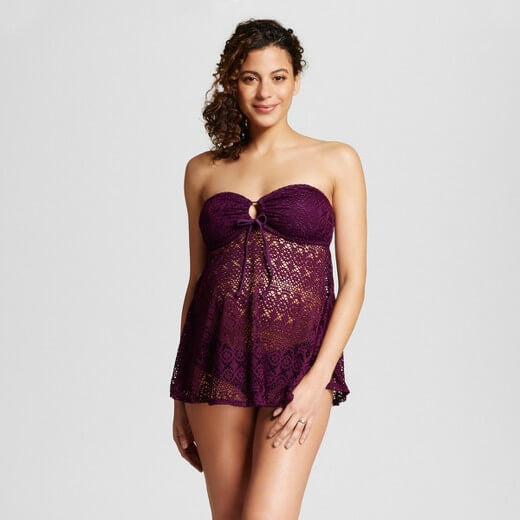
If you’re pregnant and you’re reading this right now, chances are that one of your greatest fears about childbirth is sustaining perineal tears. Well, who wouldn’t be afraid of having bruises and cuts in their lady parts that they’ll have to nurse for days or weeks following childbirth. While your concerns are valid, some of them may just have been fuelled by misinformation. Let’s help you debunk some of the myths about perineal tears; but before then, what exactly is a perineal tear?
Perineal tears, also called perineal lacerations or simply vaginal tears, occur when the baby’s head is larger than the birth canal (the opening made by the cervix, vagina, vulva). It may occur if the birth canal is too narrow or if the baby’s head is abnormally larger than normal. In both situations, your vagina would stretch beyond its limits, causing bruises or tears in its lining and skin.
Perineal tears could just be limited to the skin or may extend deeper to reach the muscles around your lady parts. The extent of the tear largely determines your recovery timeline, but the tears largely heal up in a couple of days to weeks.
Now that you know the basics of perineal tears, let’s help you clarify what they are not.
Myth 1: All first-time moms tear
No, not all first-time moms tear. While first-time moms are more likely to sustain perineal tears than women who have given birth before, not all of them have it. It just boils down to the presence of factors that cause the birth canal to expand beyond its limits. For instance, birth weight greater than 8 pounds, induced labor, prolonged labor, and instrumental delivery—using forceps or a vacuum extractor, contribute to your risk of sustaining perineal tears. Your vagina and vulva may be able to extend sufficiently even in your first vaginal birth without leaving any tears.
One of the ways you could reduce your risk or the severity of perineal tearing includes getting into a “safe” labor position, such as upright squatting or side-lying, both of which put less pressure on your perineum and vaginal floor. Other methods include developing a controlled and less expulsive push during your second stage of labor when the baby is about to come out. Pushing the baby out slowly and steadily, rather than forcefully, significantly reduces your risk of tearing.

Myth 2: With perineal massage, I cannot get vaginal tears
While perineal massages are a proven way to lower your risk of perineal tears, they do not remove that risk. You can still sustain perineal tears even with a perineal massage. As noted earlier, perineal tears are simply a result of several factors.
During your second stage of labor, your doctor or midwife might place two fingers of a lubricated gloved hand inside your vagina, moving them gently from side to side. This helps your vagina stretch further during delivery without sustaining any tears. Your partner may also help you with a perineal massage in the third trimester of your pregnancy before labor starts. 10 to 15 minutes of perineal massages may be sufficient to lower your risk of tears, but it does not eliminate it.
Myth 3: Perineal tears leaves irreversible changes to your lady parts
Undoubtedly, perineal tears may distort the appearance, shape, symmetry, and even tone of your vagina and vulva, these changes are not irreversible. You just need to know the right things to do for a good recovery of the injuries.
If you sustain mild vaginal tears, you may need regular sitz baths and over-the-counter pain medications to reduce the inflammation and speed up the healing process. Following more severe injuries to the perineum, your vulva and vagina may appear out of shape and extremely painful for a long time. These injuries may also impair sexual intercourse with your partner in the long run. However, vaginal rejuvenation surgeries can correct these changes.
Vaginal rejuvenation surgeries, such as labiaplasty and vaginoplasty, help to remove the excess scar or loose tissue found in the vulva and vagina after childbirth. This is aimed at correcting the appearance and symmetry of the vagina and vulva. These procedures also tighten the muscles of the vagina to improve its tone and sexual satisfaction.
Myth 4: The Husband Stitch can restore sexual function after a tear
Some women say having a “husband stitch” after sustaining a perineal tear during childbirth may restore sexual satisfaction, but this is untrue.
The “husband stitch” dates back to the 1950s when doctors thought adding an extra stitch or two to tighten the vagina when repairing a tear could improve a couple’s sexual satisfaction. Rather than improve sexual function, a “husband stitch” is likely to cause painful sexual intercourse. Further, the procedure is neither an accepted practice nor an established medical procedure.
As earlier pointed, to restore sexual function after birth injuries or an episiotomy, you may need vaginal rejuvenation surgery, which involves several techniques to improve the tone and tightness of the vaginal muscles.
Perineal Tears: Get the Right Information
Perineal tears are common complications of vaginal births and are one of the greatest fears every pregnant woman faces. However, it is essential for you to have the right information about perineal tears before heading for the labor room. This gives you the right balance between what to look out for and what not to expect.

_________________________________________________________________________
Dr. Okhifun is a passionate medical doctor, with nearly a decade of experience as a general practitioner. His passion for medical education led to his journey in medical writing. He has a wealth of experience creating health content for hospitals and medical centers, health organizations, telemedicine platforms, wellness organizations, medical tourism publications, drug addiction websites, and websites focused on nutrition and nutraceuticals. Currently, he is a part of the team at Labiaplasty NYC Gynecology Clinic.







Leave a comment
All comments are moderated before being published.
This site is protected by hCaptcha and the hCaptcha Privacy Policy and Terms of Service apply.